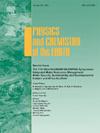Spatiotemporal assessment of groundwater sustainability across climatic zones of Nigeria
IF 3
3区 地球科学
Q2 GEOSCIENCES, MULTIDISCIPLINARY
引用次数: 0
Abstract
Groundwater is a crucial resource for ecosystems, agriculture, and human settlements worldwide, which is the subject of our study. This study meticulously evaluates the spatial and temporal variations in groundwater sustainability across distinct climatic regions of Nigeria. The methodology involves using the Groundwater Storage (GWS) data from the Global Land Data Assimilation System (GLDAS) to calculate Reliability, Resilience, and Vulnerability (RRV) indices for estimating groundwater sustainability. The modified Mann-Kendall (MMK) and Sen's Slope methods are used to detect trends in groundwater sustainability over two decades (2003–2023). The drivers of groundwater sustainability changes are identified utilizing Climate Research Unit (CRU) rainfall, potential evapotranspiration (PET) data, and gridded groundwater irrigation data. The results reveal critical regional disparities in GWS and a concerning southward decrease in sustainability. The northern regions exhibit a decline in vulnerability by −0.4 to −0.1 per decade, increasing reliability by 0.35–0.40 per decade and resilience by 0.05–0.1 per decade. These caused an increase in groundwater sustainability ranging from 0.05 to 0.15 per decade in the north, while a decline by −0.005 to 0 per decade in other areas. Rainfall shows positive correlations up to +0.6 with sustainability, while PET shows correlations between −0.3 and −0.6 with sustainability. The results suggest that decreased rainfall and increased PET cause decreased groundwater sustainability in the south. This work underscores the practical need for tailored, region-specific groundwater management practices in Nigeria.

尼日利亚各气候带地下水可持续性的时空评价
地下水是全球生态系统、农业和人类住区的重要资源,也是我们研究的主题。本研究细致地评估了尼日利亚不同气候区域地下水可持续性的时空变化。该方法包括使用全球土地数据同化系统(GLDAS)的地下水储量(GWS)数据来计算可靠性、恢复力和脆弱性(RRV)指数,以估计地下水的可持续性。采用改进的Mann-Kendall (MMK)和Sen's Slope方法检测了2003-2023年间地下水可持续性的趋势。利用气候研究单位(CRU)降雨、潜在蒸散(PET)数据和网格化地下水灌溉数据,确定了地下水可持续性变化的驱动因素。结果表明,GWS存在严重的区域差异,可持续性也有向南下降的趋势。北部地区的脆弱性每10年下降0.4 - 0.1,可靠性每10年增加0.35-0.40,恢复力每10年增加0.05-0.1。这些变化导致北部地下水可持续性每10年增加0.05至0.15,而其他地区每10年减少- 0.005至0。降雨量与可持续性呈正相关,最高可达+0.6,而PET与可持续性呈正相关,最高可达- 0.3至- 0.6。结果表明,降雨减少和PET增加导致南部地下水可持续性下降。这项工作强调了在尼日利亚需要有针对性的、针对特定区域的地下水管理实践。
本文章由计算机程序翻译,如有差异,请以英文原文为准。
求助全文
约1分钟内获得全文
求助全文
来源期刊

Physics and Chemistry of the Earth
地学-地球科学综合
CiteScore
5.40
自引率
2.70%
发文量
176
审稿时长
31.6 weeks
期刊介绍:
Physics and Chemistry of the Earth is an international interdisciplinary journal for the rapid publication of collections of refereed communications in separate thematic issues, either stemming from scientific meetings, or, especially compiled for the occasion. There is no restriction on the length of articles published in the journal. Physics and Chemistry of the Earth incorporates the separate Parts A, B and C which existed until the end of 2001.
Please note: the Editors are unable to consider submissions that are not invited or linked to a thematic issue. Please do not submit unsolicited papers.
The journal covers the following subject areas:
-Solid Earth and Geodesy:
(geology, geochemistry, tectonophysics, seismology, volcanology, palaeomagnetism and rock magnetism, electromagnetism and potential fields, marine and environmental geosciences as well as geodesy).
-Hydrology, Oceans and Atmosphere:
(hydrology and water resources research, engineering and management, oceanography and oceanic chemistry, shelf, sea, lake and river sciences, meteorology and atmospheric sciences incl. chemistry as well as climatology and glaciology).
-Solar-Terrestrial and Planetary Science:
(solar, heliospheric and solar-planetary sciences, geology, geophysics and atmospheric sciences of planets, satellites and small bodies as well as cosmochemistry and exobiology).
 求助内容:
求助内容: 应助结果提醒方式:
应助结果提醒方式:


